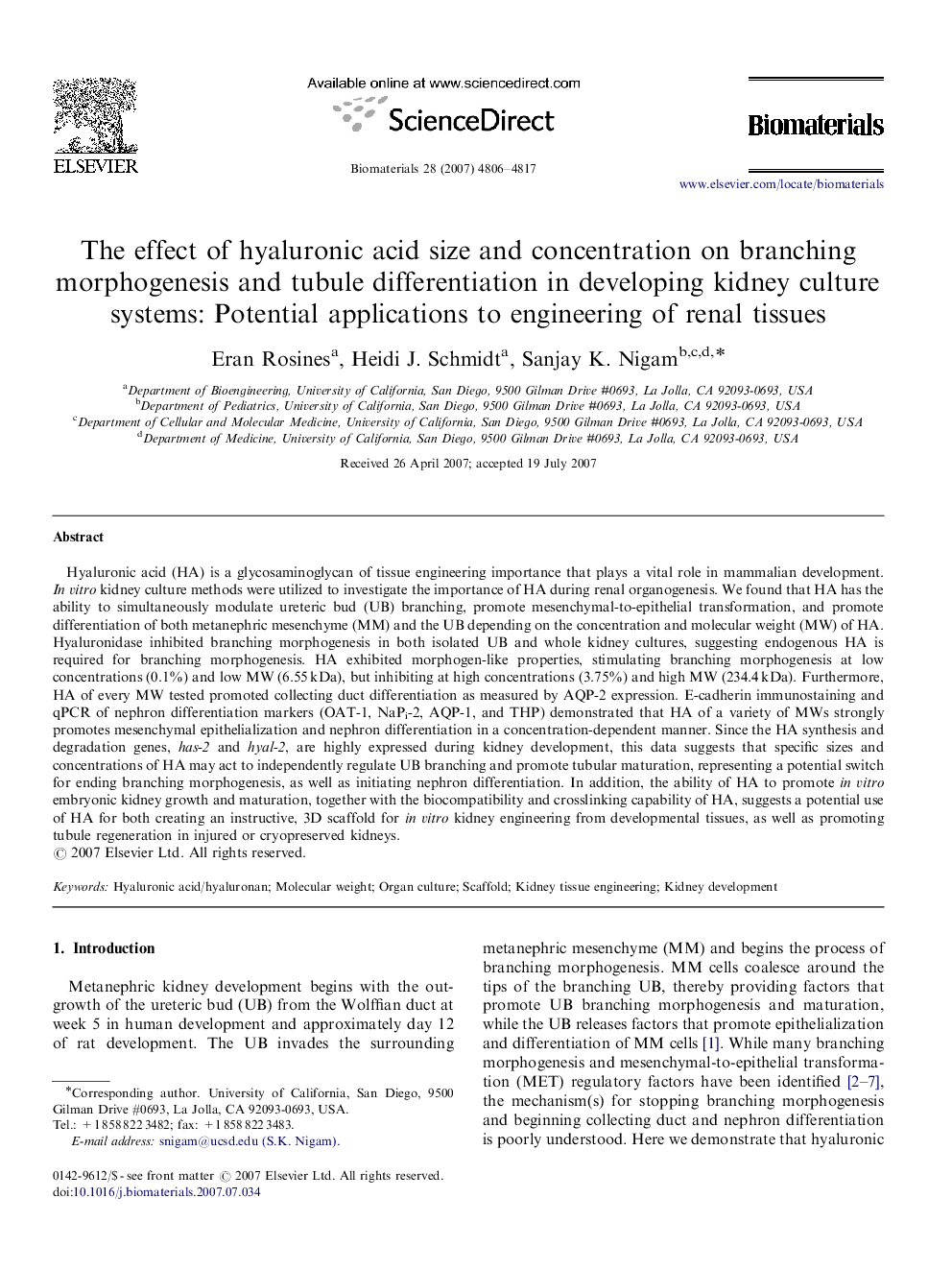| کد مقاله | کد نشریه | سال انتشار | مقاله انگلیسی | نسخه تمام متن |
|---|---|---|---|---|
| 10650 | 696 | 2007 | 12 صفحه PDF | دانلود رایگان |

Hyaluronic acid (HA) is a glycosaminoglycan of tissue engineering importance that plays a vital role in mammalian development. In vitro kidney culture methods were utilized to investigate the importance of HA during renal organogenesis. We found that HA has the ability to simultaneously modulate ureteric bud (UB) branching, promote mesenchymal-to-epithelial transformation, and promote differentiation of both metanephric mesenchyme (MM) and the UB depending on the concentration and molecular weight (MW) of HA. Hyaluronidase inhibited branching morphogenesis in both isolated UB and whole kidney cultures, suggesting endogenous HA is required for branching morphogenesis. HA exhibited morphogen-like properties, stimulating branching morphogenesis at low concentrations (0.1%) and low MW (6.55 kDa), but inhibiting at high concentrations (3.75%) and high MW (234.4 kDa). Furthermore, HA of every MW tested promoted collecting duct differentiation as measured by AQP-2 expression. E-cadherin immunostaining and qPCR of nephron differentiation markers (OAT-1, NaPi-2, AQP-1, and THP) demonstrated that HA of a variety of MWs strongly promotes mesenchymal epithelialization and nephron differentiation in a concentration-dependent manner. Since the HA synthesis and degradation genes, has-2 and hyal-2, are highly expressed during kidney development, this data suggests that specific sizes and concentrations of HA may act to independently regulate UB branching and promote tubular maturation, representing a potential switch for ending branching morphogenesis, as well as initiating nephron differentiation. In addition, the ability of HA to promote in vitro embryonic kidney growth and maturation, together with the biocompatibility and crosslinking capability of HA, suggests a potential use of HA for both creating an instructive, 3D scaffold for in vitro kidney engineering from developmental tissues, as well as promoting tubule regeneration in injured or cryopreserved kidneys.
Journal: Biomaterials - Volume 28, Issue 32, November 2007, Pages 4806–4817